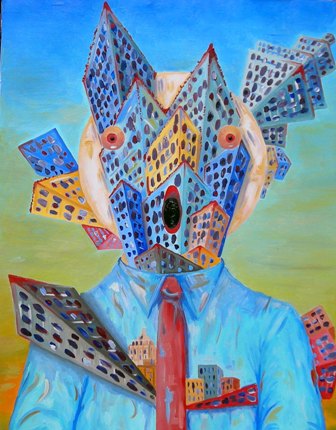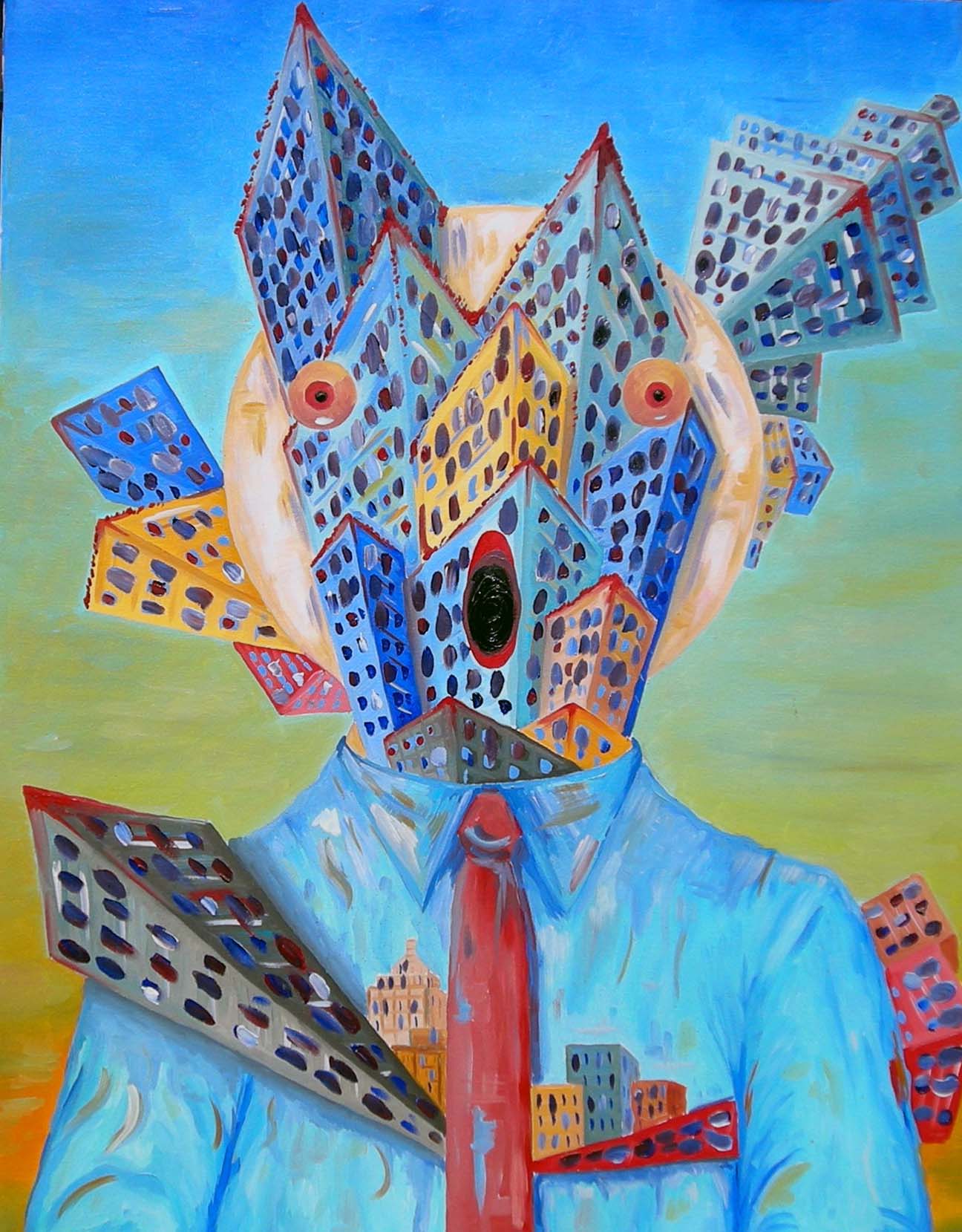
Personificazione di una città, 2008 olio su tela cm 70×90
Al centro del dipinto campeggia una città dalle fattezze umane in cui si incontrano il genere maschile (simbolicamente rappresentato dalla cravatta) ed il genere femminile (emblematizzato dagli occhi e dalla bocca). Dal loro incontro origina un’esplosione di caseggiati in cui pullula la vita. Un’esuberanza di abitazioni in fermento che si traduce con una pennellata energica e sicura. Ma l’imago urbis, sebbene si presenti in forma umana, riflette quanto sia disumanizzata la realtà urbana travolta dal dilagare del cemento e dal moltiplicarsi di anonimi caseggiati che fanno da sfondo alla storia degli uomini.
Il soggetto invita a riflettere su fenomeni sociali di estrema criticità quali la difesa dell’ambiente, l’urbanesimo, lo sviluppo sostenibile.
Il cromatismo denso e pastoso fa vibrare la pellicola pittorica. I riflessi di luce creano cangiantismi che conferiscono plasticità e morbidezza all’immagine. La tela si presta ad un confronto con la “città mortifera”: come due valve di un dittico in questa si leggono in nuce le riflessioni sviluppate nell’altra.
In collezione privata
Personification of a city-Pasquale Mastrogiacomo
At the center of the painting stands a city of human features that meet the masculine (represented symbolically by the tie) and female (symbolized by the eyes and mouth). From their original encounter an explosion of housing developments where the teeming life. Exuberance of homes in turmoil that results in a vigorous brushwork and safe. But the imago urbis, although present in human form, reflects how dehumanized urban reality overwhelmed by the spread of concrete and the proliferation of anonymous blocks that form the backdrop to human history.
The subject invites reflection on social phenomena such as extreme criticality of protecting the environment, urbanization, sustainable development.
The chromatic dense and pasty shakes the paint film. The reflections of light create changing that confer plasticity and softness to the image. The canvas lends itself to a comparison with the “deadly city” as two halves of a diptych you read this in nuce the reflections developed in the other.
